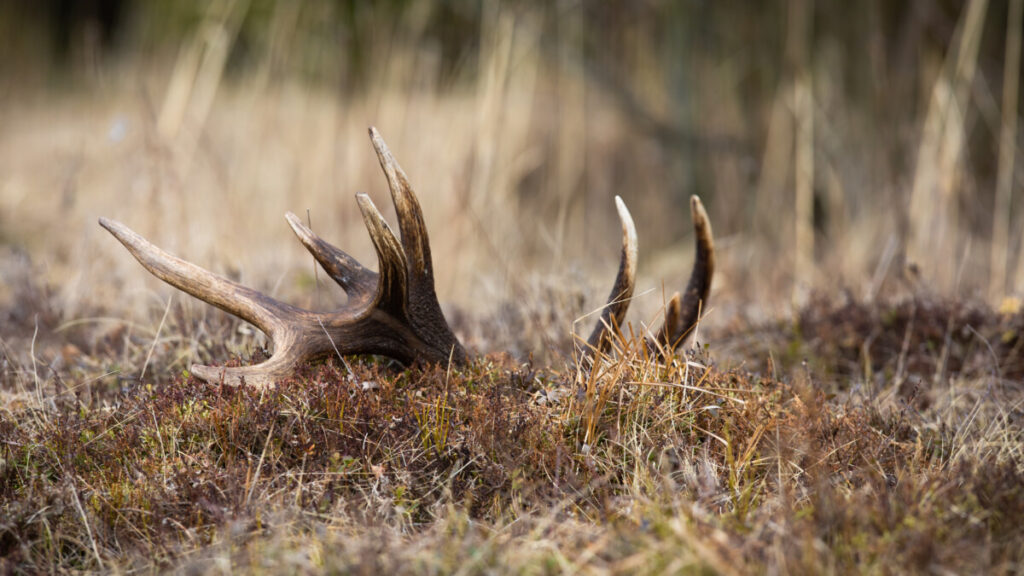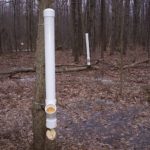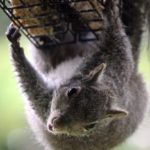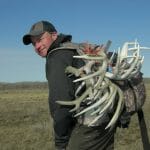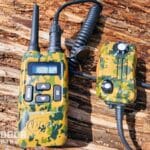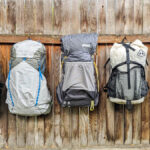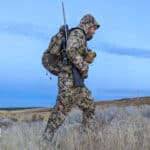If you’re an avid outdoors person, shed hunting is probably something you’ve done before or something you aspire to do. Shed hunting, on the outside, seems pretty easy and simple. However, you should know a couple of things before you go, including what time of year is best in each region.
The best time to shed hunt is typically right after deer and elk have dropped their antlers. This happens anytime between November and April. But the best time to shed hunt is during February and March. This is true for nearly all the regions in the United States. In Canada, the best time is usually March or whenever most of the snow has melted.
Now that you know what time of year you should be shed hunting, you should be good to go, right?
Well, not quite, because there’s a bit more to shed hunting than meets the eye. It’s also important to know a little bit about what kind of sheds to look for, what month is best, and the rules surrounding this activity.
Shed Hunting: Different Regions
So, when exactly should you go shed hunting? Most animals shed their antlers at the beginning of the year when the snow starts melting and spring begins. This tends to be anytime between January and April, but February and March are when the largest concentration of antlers can be found on the ground.
Regions of the USA
In the United States, it’s easy to determine the best time to shed hunt. All regions in the United States have populations of animals that shed their antlers, mostly in February and March.
A few variables might impact shed numbers, such as snowfall and hours of daylight. However, the drop time is pretty consistent among most species and regions.
As for the best time to go shed hunting, the earlier in the spring the better. You don’t want to go too early (January) because you’ll have a tough time trekking through the snow, and you may come up empty-handed. Waiting until February and ideally, early March, is probably your best bet.
By going in February and early March you’ll have some of the first pickings. This is especially true if you live near a region where it’s popular to go shed hunting. Many people will be competing to find the best antlers first. If you wait too long, you will be disappointed.
There will be plenty of other shed hunters to compete with, so if you go out too late, say mid-March or later, you’ll find that all of the good racks will likely be taken. This often happens early in the season.
Another thing to compete with is the snow. As mentioned earlier, most animals drop their racks when the snow has melted, and spring has begun. However, there can be many unexpected snowfalls in spring.
If too much snowfall occurs after most animals have shed, you are likely to come across a few racks that have been broken, weighed down by snow, or damaged by other animals. To avoid risking this, it’s wise to go as soon as the shed has started rather than wait until later in the spring.
Related: 25 Experts Give Their Best Shed Hunting Tips For Those Who Can’t Find Any
Regions of Canada
Canada is much larger in area than the United States. It has 5 distinct regions—the Atlantic region, Central Canada, Prairie Provinces, North Region, and the West Coast Region. Each region has its own territories.
While there is some differentiation/variability between some of these regions, the best shed hunting time is fairly similar to that of the U.S.
February and March are great times to shed hunt in all regions of Canada as well as the United States. The only difference is that Canada is often colder, and the snow might not melt until a little later.
Regardless of the snow, you’ll still want to get out and go hunting as soon as possible, ideally in March. You may have to deal with a little snow, but if you’re determined to get yourself a good rack of antlers, it will be worth it.
Best Month to Find Shed Antlers

So far, we’ve been able to talk about two different months (February and March) which are ideal for finding sheds. The truth is, either one of these months works, but you may want to dedicate your shed hunting to one of them in particular.
February is a good month for shed hunting in both the United States and Canada because snow will have started to melt near the end of the month.
However, dedicating your shed hunt to just February is risky. Going too early means there could still be a lot of animals that haven’t dropped their antlers yet. Plus, if it’s still too snowy and cold out, you may not be productive.
If you have to choose just one month to go out for your shed hunt, March is the ideal time. In March spring has begun and, most of the time, there isn’t too much snow. So you’ll be able to find the freshest racks that are in good condition and haven’t been damaged yet.
Shed Hunting: Ethics and Rules
Shed hunting has grown increasingly popular in recent years. It’s a great way to spend the waiting time between hunting seasons. It’s also great for introducing family and friends to hunting in a simple way. Another bonus is your ability to scope out potential areas where there may be lots of deer, elk, or moose.
Since many people have picked up this hobby, many states and regions throughout North America have strict regulations. These are intended to protect animals during the winter and early spring months.
The period between mating season and spring is difficult for many deer-related species. The weather is harsh and food is scarce. The last thing they need to worry about is human harassment. This is why it’s all about timing and ethics.
Basic Ethics and Gear
The most ethical way to collect new sheds from an animal in the process of shedding is to give it space. Watch from a distance. A trail cam can be a great way to do this. We have a great article about the best trail cams. Often, the animal will shed one antler in one place, and as it moves away, the second will be shed in a location miles from the first.
If you want the full set from a certain animal, you’ll have to be patient. Do not chase or harass the creature, and never send a dog or other pet to chase them. Not only is this unethical and ineffective, but it is also illegal in many areas.
It is also important not to feed wild animals during the winter.
Some shed hunters have been known to use food to attract a shedding animal in an attempt to pick up their antlers more directly. Unnatural sources of food can increase the spread of disease, attract new predators, harm their unaccustomed digestive systems, and cultivate an unnatural reliance on sources that will not always be available during the winter months.
The most successful shed hunters are patient and respectful of the wildlife. As you take the time to observe these creatures from a distance, you will not only allow them to shed in a natural, stress-free environment, but you will also come to learn more about their behavior.
In turn, this knowledge will allow you to become an expert on the best areas to find antlers. You’ll also learn the typical habits of the animals. Shed hunting can be the ideal time of year to scope an area out.
State Shed Hunting Regulations
Those are the basics of shed hunting ethics, but here are the more specific details regarding state regulations for shed hunting in some states:
Arizona: Stay on approved roads and trails while shed hunting; review road and trail access with local USFS, BLM, and state offices.
Fish and game departments caution hunters to only pick up naturally shed antlers. Hunters who discover skulls or deadheads are required to report the location to Arizona Game and Fish for further research.
Colorado: No permits are required and no seasons are restricted, but the collection of antlers from public land is prohibited from January to March. From mid-March through mid-May, shed hunters may only collect antlers before sunset.
Idaho: No license is required and no public areas are restricted. Hunters must abide by rules regarding access to and travel on local trails.
Indiana: No permits are required for antlers, but a permit is required for the collection of a skull.
Iowa: Shed antlers can be collected on public land including state parks, but permission must be granted by the landowner on private land. Skulls cannot be picked up without a tag and approval.
Missouri: No authorization is needed to possess, buy, or sell shed antlers not attached to the skull plate.
Montana: Only bighorn sheep heads are illegal to collect. Other than that, Montana’s wildlife agencies typically open areas for shed hunting between May and June. Check local organizational resources for guidelines that may adapt to varying circumstances each year.
Nebraska: It’s legal to collect antlers that have been shed by antelope, deer, or elk. It’s illegal to collect any part of mountain sheep.
Nevada: Review open road/trail access with local USFS, BLM, and state offices. Follow the aforementioned rules and ethics in the treatment of the animals.
New Jersey: Shed antlers are legal to be picked up, but it is illegal to harvest antlers from road-killed deer.
New Mexico: No permit is required, and antlers may be picked up during any season, but local regulations may vary, so check to be sure. Heads, horns, and antlers from larger species require a receipt from New Mexico Game and Fish. Hunters must remain on approved trails using approved means of travel.
Oregon: Many of Oregon’s wildlife areas are managed by local and state departments, and shed hunting is prohibited to protect the big game. See pages 98-100 of the Oregon Big Game Regulations for details.
South Dakota: Shed antler hunting is now allowed on GFP-owned lands, including state parks, recreation areas, and Game Production Areas. However, permission from the landowner is required for shed hunting on private land.
Utah: If you want to shed hunt between February 1 and April 15, complete an ethics course online. Children under the age of 17 do not have to complete the course if accompanied by an adult guardian who has taken and passed the course.
The course requires a printed verification and a signature, and in turn, you will receive a certificate of completion that may be presented to wildlife officials if necessary. This would only be requested during the aforementioned dates.
Review road and trail access guidelines, as certain areas are closed during the winter. Only naturally shed antlers may be picked up, not antlers attached to a skull or “deadhead.”
Virginia: Antler traps are illegal because they are designed to entangle or trap the antler while it is still attached to a living animal. Collecting, possessing, buying, and selling shed deer antlers is legal.
Washington: It is legal to possess naturally shed antlers of deer, elk, and moose.
West Virginia: Antler sheds are considered parts of wildlife. You cannot keep, maintain, or possess parts of wildlife unless you legally kill it.
Wyoming: Shed hunting is prohibited from January through April on most public lands west of the Continental Divide, excluding lands in the Great Basin. Winter ranges in Teton County are off-limits during the winter. Hunters should consult local resources for approved roads and trails.
Which Animals Shed Antlers?
Animals in the Cervidae family (any animal related to a deer) shed antlers.
A common misconception about antlers is that they are basically horns. But horns are permanent bones grown by animals in the Bovine family (bison, bighorn sheep, mountain goats, cattle, goats, and sheep.)
Among bovine species, both males and females grow horns. These bones are coated in permanent layers of keratin, the same material that makes up fingernails on a human.
Unlike horns, antlers are branched bones that grow incredibly fast and are shed annually. Mere weeks after an animal sheds its antlers, it will begin to grow a new pair.
Antler growth increases when the animal is exposed to more sunshine because the sun and Vitamin D are associated with increased levels of testosterone production. Testosterone is a necessary hormone for healthy antler development in the male of a deer-related species.
Deer antlers can grow as quickly as 1/4 of an inch per day, while elk antlers can grow up to an inch per day. Impressively, a healthy moose can grow up to a pound of antler material in a single day!
In the midwestern United States, the most common antler shedders are white-tailed deer, elk, and moose. Moose are the largest deer-related species, so their antlers are particularly impressive.
In other North American regions, mule deer, elk, and caribou (also known as reindeer) are common deer-related species, and they shed antlers around similar times throughout the spring. Caribou antlers are easier to find because they are the only deer-related species in which both males and females grow antlers.
Why Do Animals Shed Antlers?
Some antlers have an outer layer that resembles velvet. These antlers are likely immature because the velvet acts as a short, dense layer of fur that allows more blood (and therefore more oxygen) to reach the antlers and promote sustainable growth. The growth begins as cartilage and then calcifies into bone.
If the animal has a poor diet or lives in a habitat where it is difficult to sustain life, its overall bone density will likely decrease. This is because up to a quarter of the energy obtained from grazing will be directed toward antler growth.
Some biologists speculate that because growing antlers takes so much biological energy, females that do not grow antlers live longer than males.
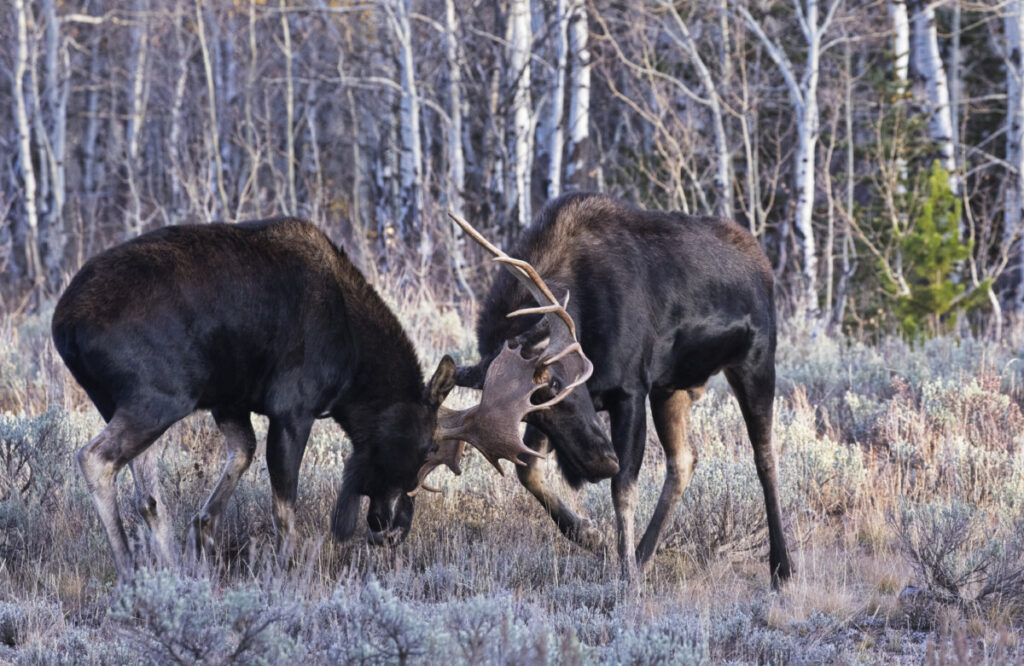
Mature antlers will have dry, itchy velvet layers. So you may see an animal with antlers rubbing it on a tree or other objects in the wild. Because the velvet is technically a layer of skin, the process may look bloody and gruesome. Rest assured that it is not harmful to the creature and is both natural and necessary.
Rubbing antlers on nearby objects is also a way that male animals spread their scent and claim areas of territory. After antlers are fully developed, the process of shedding the layer of dry velvet can be as brief as a single day.
Antlers are an important physical feature of animals in the Cervidae family. They are necessary for sparring during mating season. Dominant males may train younger males by sparring with them or may challenge other males for the right to mate.
The sound of antlers clashing will often draw other deer or moose to the surrounding area. This is important because it allows the animals to witness which male is the most dominant.
Usually, the animals simply posture to ward off competition, but occasionally, equally-matched males will be locked head-to-head until a loser concedes. The winner has his choice of mate.
At the end of the mating season, these animals shed their antlers because the extra weight is not worth carrying or sustaining during the winter months when it is already difficult to survive.
Shedding antlers increases animals’ mobility, lightens overall body weight, and lowers the number of nutrients they need to forage during snowy months.
When Should You Go Shed Hunting?
Because antlers grow so quickly and are shed frequently, hunting for sheds is humane and sustainable. Just be aware of the policies and standards associated with shed hunting in your area.
So get out there and find some trophies for your wall. Just make sure you are ready in February and March when the best shed hunting happens.


